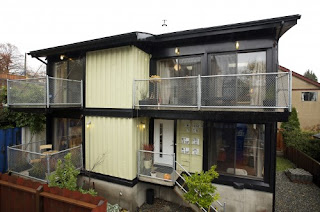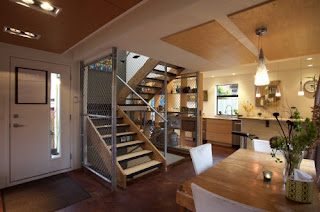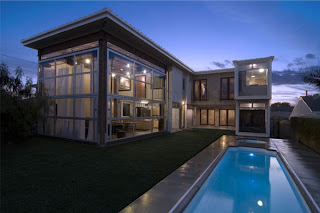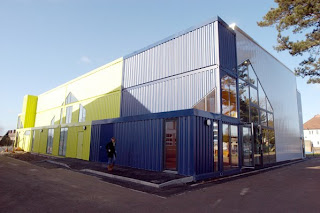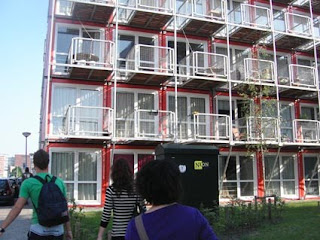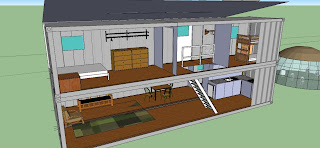Traditional back yard farming is now an emerging industry with big names, heavy players and serious leaders.
Entire city streets, city blocks, brown fields, parking lots, roof tops & many other urban spaces are being utilized and transformed into the farms of the "now" and the Farms of the "Future."
Urban farms are usually:
- Organized by locals
- 90% of the time imply organic growing methods
- Utilizes perma-cultural techniques
- Reduce community waste by recycling waste into energy, turn organic waste into compost
- Employ people and train locals about food security(mostly youth and students)

America's Top 10 Urban Farms
Canadian Research says Aqua-Ponics makes Economic improvment over traditional Green-House production- Aquaculture brings in 2 Revenue Streams and much more efficiencies
Urban Farming is serious business on everyone's agenda these days as big name companies, Futurist, National Banks, regional & State Government officials are revitalizing and taking advantage of the opportunities of Urban farming.
Aqua-Ponics
Transforming Communities
Growing Power a Wisconsin based non-profit is teaching minds, preparing bodies and organizing communities in 8 States, Growing Power is known nationally, internationally and is headed by award winning Genius -Video Giant of a Gentlemen Will Allen.
"What you see in these green houses is about relationship building-video, I don't build gardens with fences, you have to engage the community, we go into communities and we organize around the work we do." - Will Allen
Growing Power feeds and teaches 100's of thousands of people every year thus radically changing the communities they engage by breaking down racial, financial and religious barriers.
Growing Power is a Multi-Cultural Multi Generational organization which employs and trains youth and intrigues the adults and changes all the communities they engage for the better.
SO WHAT IS AQUA-PONICS?
 Growing fish and plants for food and profit.
Growing fish and plants for food and profit.By raising plants and fish in a symbiosis relationship where each organism benefits the other we optimize the health of both organisms within the cycle and obtain maximum yields come harvest.
Grossing $4-5 per sq ft one acre can yield nearly $200,000 per acre.
WHY IS AQUA-PONICS SO SUCCESSFUL?
Aqua-ponics is a old age tradition being revitalized and re-discovered in modern times. Aqua-ponics dates back 5000 years and was mastered by Egyptians and Chinese communities alike.
Aqua-Ponics is a living ec0-system which is left to maintain itself but is guided by human hands and human techniques to maximize yeilds.
As fish are raised the fish waste and ammonium builds up becoming more and more toxic to the fish but the plants and their root systems acts as living filters.
The plants absorb the nutrients within the water thus keeping the plant healthy, growing, eventually maximizing yields.
The root systems absorb the ammonium and nitrogen thus returning the water back to the fish in pristine condition thus eliminating the need for big costly filters and infrastructure which is commonly associated with the aqua-culture industry.
The most costly piece of infrastructure associated with aqua-ponics is a simple re-circulating pump which keeps the water moving in a continuous loop
ANOTHER VIEW POINT OF AQUA-PONICS
Aquaponics is the combination of recirculation aquaculture and hydroponics. In aquaponics, you grow plants and fish together in one integrated system. The fish waste provides a food source for the growing plants and the plants provide a natural filter for the water the fish live in. This creates a sustainable ecosystem where both plants and fish can thrive. Aquaponics is the ideal answer to a fish farmers problem of disposing of nutrient rich water and a hydroponic growers need for nutrient rich water.
Hydroponics is growing plants in a solution of water and nutrients, without soil. The solution is created by adding the elements a plants needs to water, which is fed directly to the plant’s roots. In some hydroponic systems the roots are in a growing medium which keeps them moist, aerated and helps to support the plant. Hydroponics provides the plant with the ideal water and nutrient ratios and optimum conditions for growth.
In aquaculture, the water quickly becomes nutrient rich due to the fish digesting their food and excreting waste. The waste water is usually filtered and/or disposed of to keep the tank water free of toxic buildups.
The Aqua-Culture Journal is a great tool for getting in touch with a community that's changing and empowering the world.
Composting



